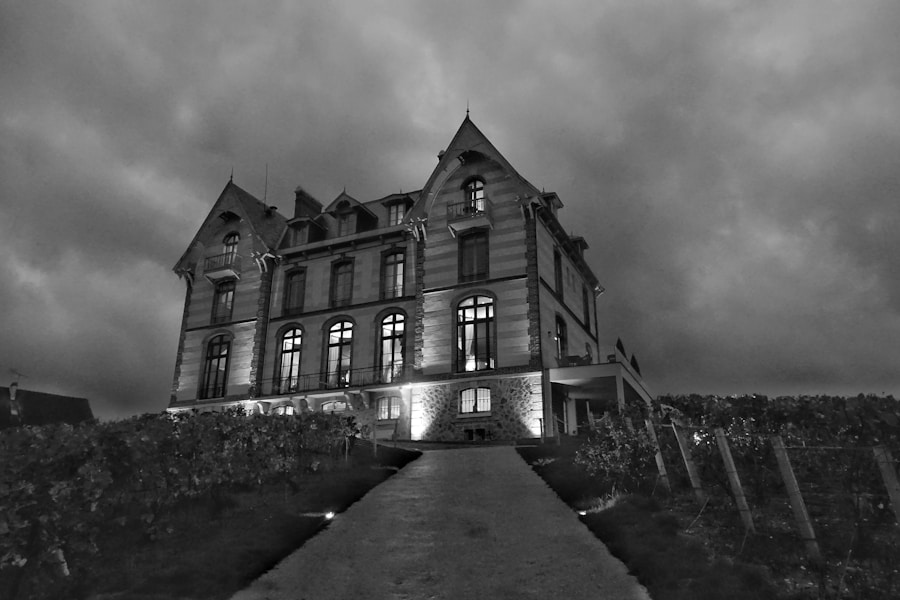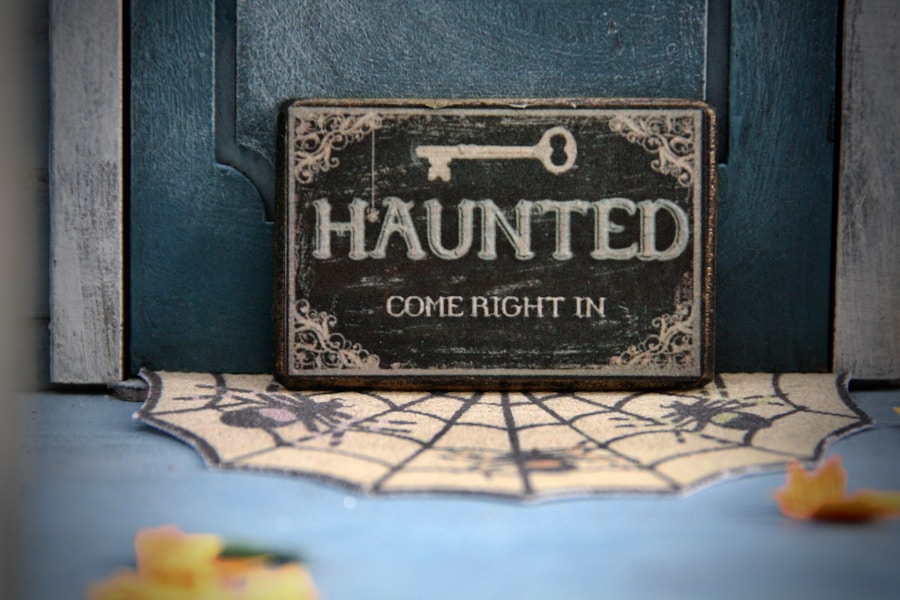As you step into a haunted house, the air thickens with anticipation, and your heart races in response to the eerie atmosphere. The flickering lights, the chilling sounds, and the sudden movements all work together to create an immersive experience that sends shivers down your spine. Behind this carefully crafted illusion lies an intricate web of sensor technology that plays a pivotal role in enhancing the thrill of fear.
Sensor technology has revolutionized the way haunted attractions operate, allowing them to engage visitors on a deeper level than ever before. By integrating various sensors into their designs, haunted houses can create a more dynamic and responsive environment that heightens the overall experience. In recent years, the use of sensor technology in haunted houses has become increasingly sophisticated.
Gone are the days when simple jump scares and static props were enough to elicit screams. Today, attractions utilize advanced sensors that can detect movement, sound, and even changes in temperature to create a more interactive and personalized experience for each visitor. This evolution not only amplifies the fear factor but also transforms the haunted house into a living entity that reacts to your presence.
As you navigate through dark corridors and encounter spine-chilling scenes, you may not realize just how much technology is working behind the scenes to keep you on edge.
Key Takeaways
- Sensor technology plays a crucial role in creating a terrifying experience in haunted houses by enhancing the overall atmosphere and interaction with visitors.
- Various types of sensors, such as motion sensors, sound sensors, and temperature sensors, are used to trigger scary effects and create an immersive environment.
- Sensor technology enhances fear in haunted houses by creating unexpected and interactive scares, increasing the level of realism and unpredictability.
- The future of sensor technology in haunted attractions is likely to involve more advanced and interactive sensors, leading to even more immersive and personalized experiences for visitors.
- Ethical considerations of using sensor technology in haunted houses include ensuring the safety and well-being of visitors, as well as respecting their personal boundaries and comfort levels.
The Role of Sensors in Creating a Terrifying Experience
Sensors serve as the backbone of modern haunted houses, enabling them to craft experiences that are both thrilling and unpredictable. Imagine walking through a dimly lit room when suddenly, a hidden motion sensor triggers a loud scream or a ghostly figure lunges toward you from the shadows. This immediate response creates an adrenaline rush that is hard to replicate with static displays alone.
The unpredictability of sensor-triggered events keeps you guessing, ensuring that no two visits are ever quite the same. Each step you take could lead to a new surprise, heightening your sense of vulnerability and fear. Moreover, sensors can be programmed to respond to specific actions or behaviors, allowing for a more tailored experience.
For instance, if you linger too long in one area, a sensor might activate a chilling sound effect or an unexpected visual scare. This level of interactivity not only engages you more deeply but also fosters a sense of agency within the haunted house environment. You become an active participant in the unfolding narrative rather than just a passive observer.
This dynamic interaction is what sets modern haunted attractions apart from their predecessors, making them more immersive and terrifying.
Types of Sensors Used in Haunted Houses

A variety of sensors are employed in haunted houses to create an array of effects that contribute to the overall atmosphere. Motion sensors are among the most common, detecting your movements as you traverse through different rooms. These sensors can trigger animatronics, sound effects, or lighting changes that enhance the sense of dread.
For example, as you walk past a seemingly innocuous corner, a motion sensor might activate a hidden figure that jumps out at you, catching you off guard and eliciting a scream. Sound sensors also play a crucial role in crafting an unsettling ambiance. These devices can pick up on ambient noise levels and respond accordingly.
If the chatter of visitors becomes too loud, sound sensors might trigger eerie whispers or unsettling music to draw attention back to the haunting atmosphere. Additionally, pressure sensors can be used in floors or walls to detect when someone is nearby, allowing for synchronized scares that feel organic and well-timed. Each type of sensor contributes uniquely to the overall experience, ensuring that every moment is filled with tension and excitement.
How Sensor Technology Enhances Fear in Haunted Houses
The integration of sensor technology into haunted houses not only amplifies fear but also creates a more immersive narrative experience. When you enter a haunted attraction equipped with advanced sensors, you are not merely walking through a series of rooms; you are stepping into a carefully orchestrated story where every element is designed to elicit an emotional response. The unpredictability of sensor-triggered events keeps you on high alert, as you never know when or where the next scare will come from.
Furthermore, sensor technology allows for real-time adjustments based on visitor behavior. If a group appears particularly brave or unafraid, operators can modify the intensity of scares to ensure that everyone remains engaged and terrified. This adaptability is crucial in maintaining the thrill throughout your visit.
The ability to tailor experiences based on audience reactions creates a unique atmosphere where fear is not just a one-size-fits-all approach but rather a personalized journey through terror.
The Future of Sensor Technology in Haunted Attractions
As technology continues to advance at an unprecedented pace, the future of sensor technology in haunted attractions looks promising and exciting. Innovations such as artificial intelligence and machine learning could further enhance the interactivity of haunted houses. Imagine walking through an attraction where sensors not only detect your movements but also analyze your facial expressions and body language to gauge your level of fear.
This data could then be used to tailor scares specifically for you, creating an experience that feels uniquely crafted for your emotional state. Additionally, virtual reality (VR) and augmented reality (AR) technologies are beginning to make their way into haunted attractions as well. By combining these technologies with existing sensor systems, haunted houses could offer multi-sensory experiences that blur the lines between reality and fiction.
You might find yourself in a haunted forest where digital apparitions interact with you based on your movements and reactions, creating an unparalleled level of immersion. The possibilities are endless as technology continues to evolve, promising even more thrilling experiences for those brave enough to enter.
Ethical Considerations of Using Sensor Technology in Haunted Houses

Safety First: Avoiding Harm and Distress
While sensor technology can create thrilling experiences in haunted houses, it also raises important ethical considerations. One primary concern is visitor safety; attractions must ensure that their use of sensors does not inadvertently cause harm or distress to guests. For instance, sudden scares triggered by motion sensors could lead to panic or accidents if not carefully managed.
Striking a Balance: Effective Scares vs. Safe Environment
Operators must strike a balance between delivering effective scares and maintaining a safe environment for all visitors. This requires careful planning and consideration to avoid any potential risks or harm to guests.
Psychological Impact and Transparency
Another ethical consideration involves the psychological impact of intense experiences on guests. While many people enjoy being scared in controlled environments, others may find certain elements distressing or triggering. Haunted houses must be mindful of their audience and provide clear warnings about what visitors can expect before they enter. Transparency about the use of sensor technology and its potential effects can help ensure that everyone has an enjoyable experience without crossing personal boundaries.
The Impact of Sensor Technology on Visitor Experience
The integration of sensor technology has fundamentally transformed the visitor experience in haunted houses, making it more engaging and memorable than ever before. As you navigate through these attractions, you become part of an interactive narrative where your actions directly influence what happens around you. This level of involvement fosters a sense of connection between you and the environment, making each scare feel more personal and impactful.
Moreover, the unpredictability created by sensor-triggered events enhances the thrill factor significantly. You may find yourself jumping at unexpected noises or reacting instinctively to sudden movements, which adds an element of surprise that keeps your adrenaline pumping throughout your visit. The combination of sensory stimuli—sight, sound, and even touch—creates a multi-dimensional experience that lingers long after you’ve left the haunted house.
The Evolution of Fear in Haunted Houses
The evolution of sensor technology has ushered in a new era for haunted houses, transforming them into immersive experiences that captivate and terrify visitors like never before. As you explore these attractions filled with advanced sensors and interactive elements, you become part of a living narrative designed to evoke fear and excitement simultaneously. The unpredictability and personalization offered by this technology ensure that each visit is unique, keeping you on your toes as you navigate through dark corridors and face unexpected scares.
Looking ahead, it is clear that sensor technology will continue to shape the future of haunted attractions. As innovations emerge and operators embrace new possibilities, visitors can expect even more thrilling experiences that push the boundaries of fear and interactivity. However, it is essential for operators to remain mindful of ethical considerations surrounding safety and psychological impact as they craft these experiences.
Ultimately, the evolution of fear in haunted houses reflects not only advancements in technology but also our enduring fascination with the unknown—a thrilling journey into darkness that invites us all to confront our deepest fears.
Sensor technology has revolutionized the way haunted houses create scares and thrills for visitors. By using motion sensors, sound sensors, and even heat sensors, these attractions can create a truly immersive and terrifying experience. For more information on some of the best haunted house attractions in the Midwest that utilize sensor technology, check out this article. If you’re interested in exploring haunted house attractions in Germany that also incorporate sensor technology, be sure to read about the top haunted house attractions in Germany.
FAQs
What is sensor technology in haunted houses?
Sensor technology in haunted houses refers to the use of various sensors such as motion sensors, sound sensors, and light sensors to create interactive and immersive experiences for visitors. These sensors are used to trigger special effects, animatronics, and other elements of the haunted house to scare and entertain guests.
How does sensor technology enhance the haunted house experience?
Sensor technology enhances the haunted house experience by creating a more interactive and immersive environment. It allows for dynamic and responsive scares, as the sensors can detect the presence of visitors and trigger specific effects or animations at the right moment, creating a more thrilling and personalized experience.
What types of sensors are commonly used in haunted houses?
Commonly used sensors in haunted houses include motion sensors, which detect movement and can trigger scares or special effects; sound sensors, which can detect screams or other noises to activate certain elements; and light sensors, which can be used to control the lighting and ambiance of different areas within the haunted house.
Are there any safety considerations when using sensor technology in haunted houses?
Yes, safety considerations are important when using sensor technology in haunted houses. It is crucial to ensure that the sensors and related equipment are properly installed and maintained to prevent any accidents or malfunctions. Additionally, staff should be trained to monitor and troubleshoot the sensor technology to ensure the safety of visitors at all times.
How is sensor technology integrated into the overall design of a haunted house?
Sensor technology is integrated into the overall design of a haunted house by strategically placing sensors throughout the attraction to create a seamless and cohesive experience. The sensors are often hidden or camouflaged to maintain the element of surprise and to ensure that visitors are unaware of the technology at work behind the scenes.

No responses yet